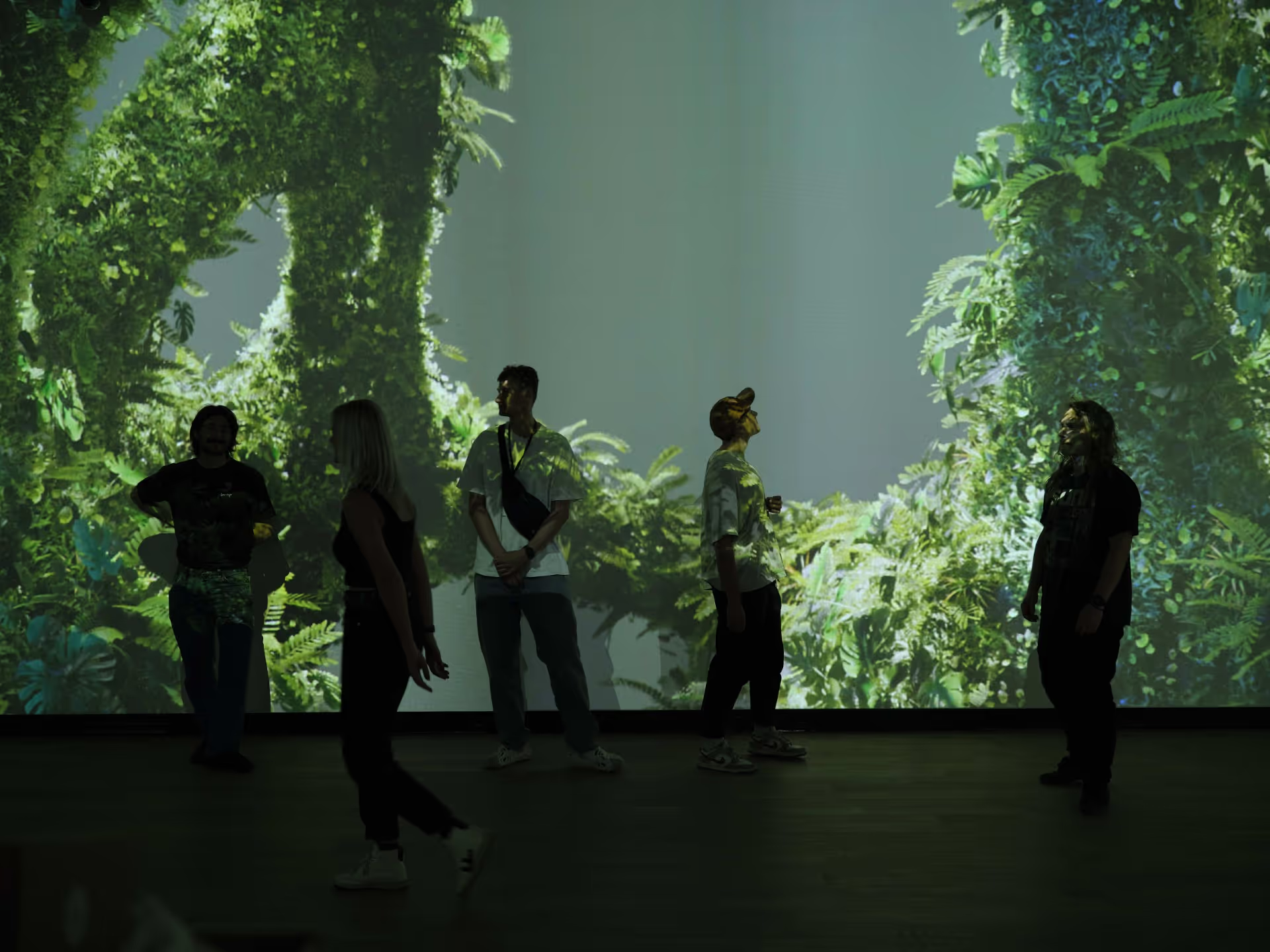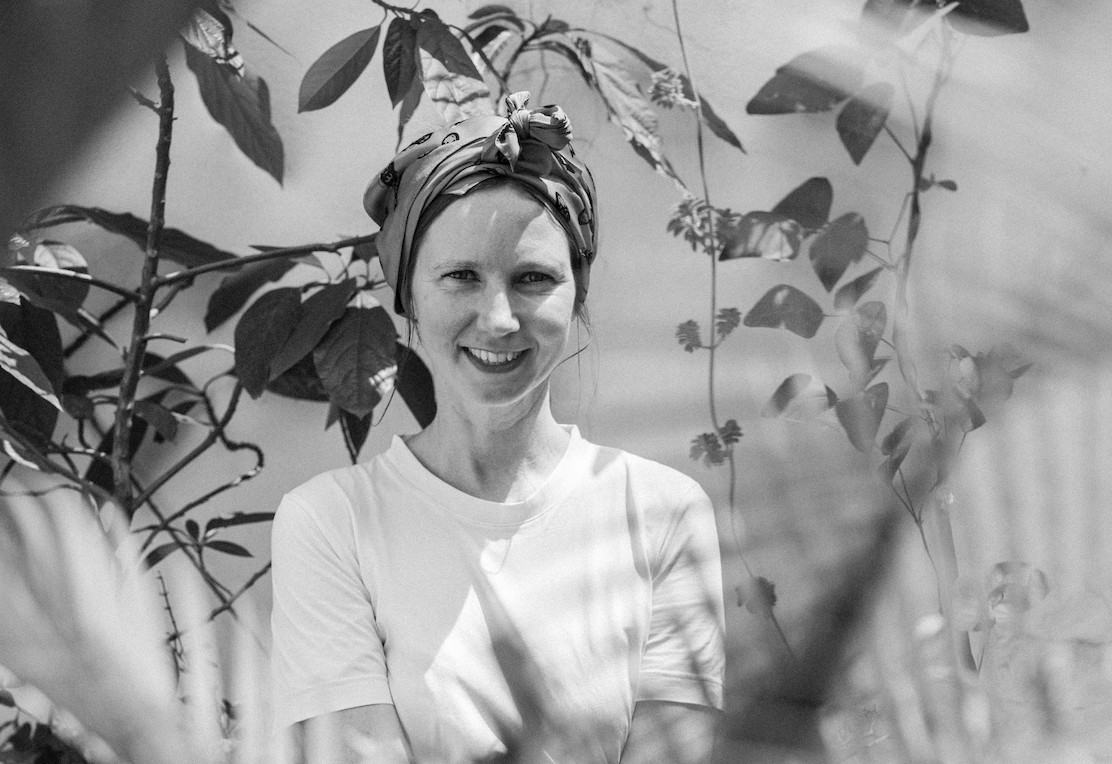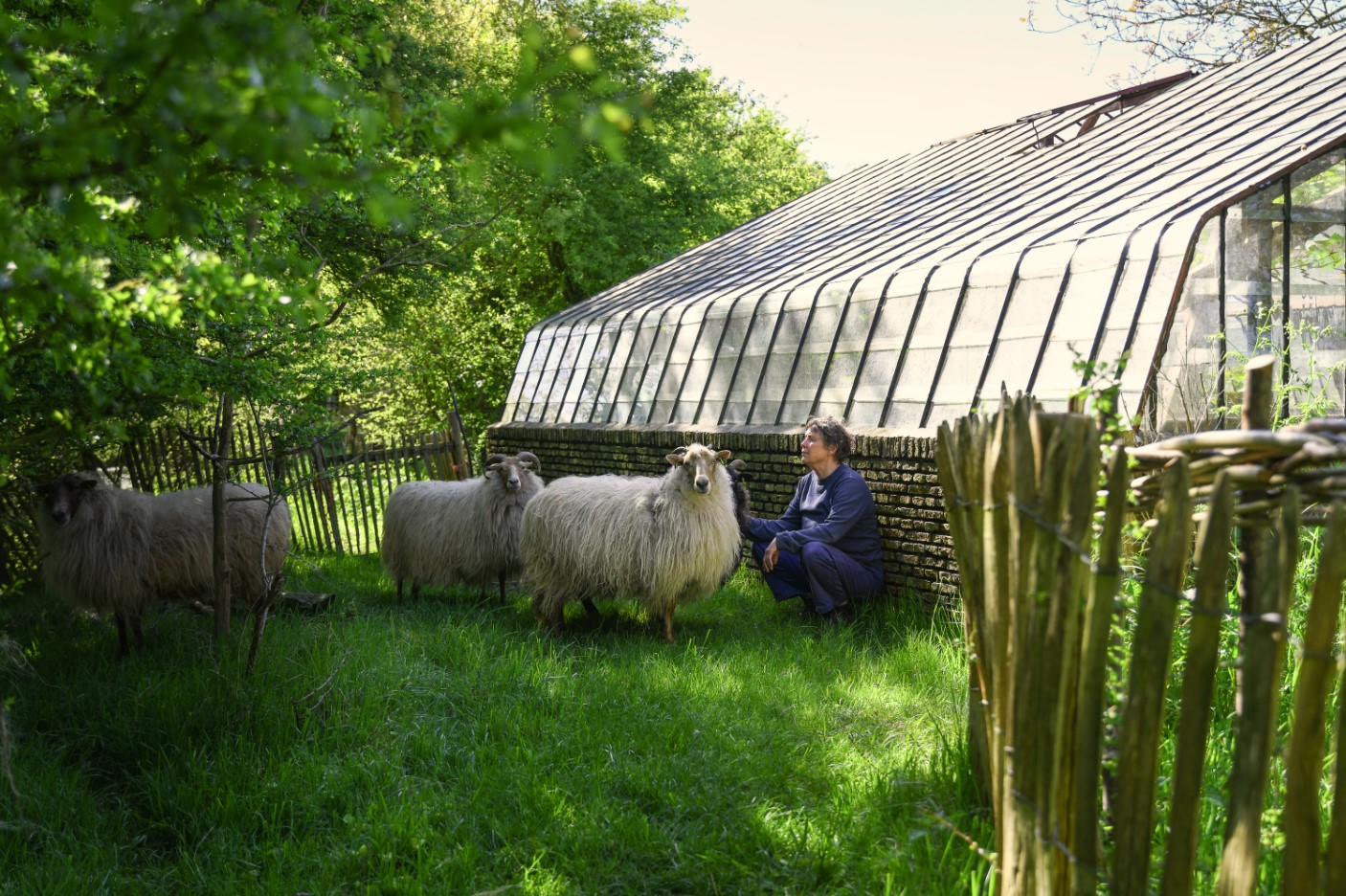Interview: Nikol Galé • Photo: Zünc Studio
Can you briefly introduce me to Zünc Studio and its field of focus?
Zünc Studio primarily focuses on producing commercial campaigns for agencies and brands worldwide. Our expertise extends across multiple domains including CGI, mixed media, and installation, allowing us to offer diverse and innovative solutions to our clients. In the intervals between commercial projects, we usually work on self-initiated explorations that align with matters we find important. Through these projects, we try to amplify ideas that we believe deserve more visibility but also sharpen our skills and explore new ways of visual expression. We enjoy experimenting with a wide range of technologies, from CGI tools and cameras to 3D printers, virtual reality, and gadgets like thermal cameras.
Approach of Zünc Studio often revolves around Biomimicry. Could you describe what role does nature play in your work?
We find the natural world an endlessly fascinating source of beauty and wisdom. There's much to learn from nature, as it's the earliest example of advertising: flowers use their scent, colours and forms to declare they are desirable and entice pollinators. There are so many interesting examples of design based off natural phenomena - like the Japanese Bullet Train whose shape is inspired by the Kingfisher's beak, or the Burdock plant which inspired the creation of Velcro. In a similar way, we use biomimicry in our work when choosing to imitate the forms and behaviour of plants. We can use their symbolism and characteristics to aid the narrative in our work. But most of all, we love to then push beyond what is possible in the real world using 3D software.
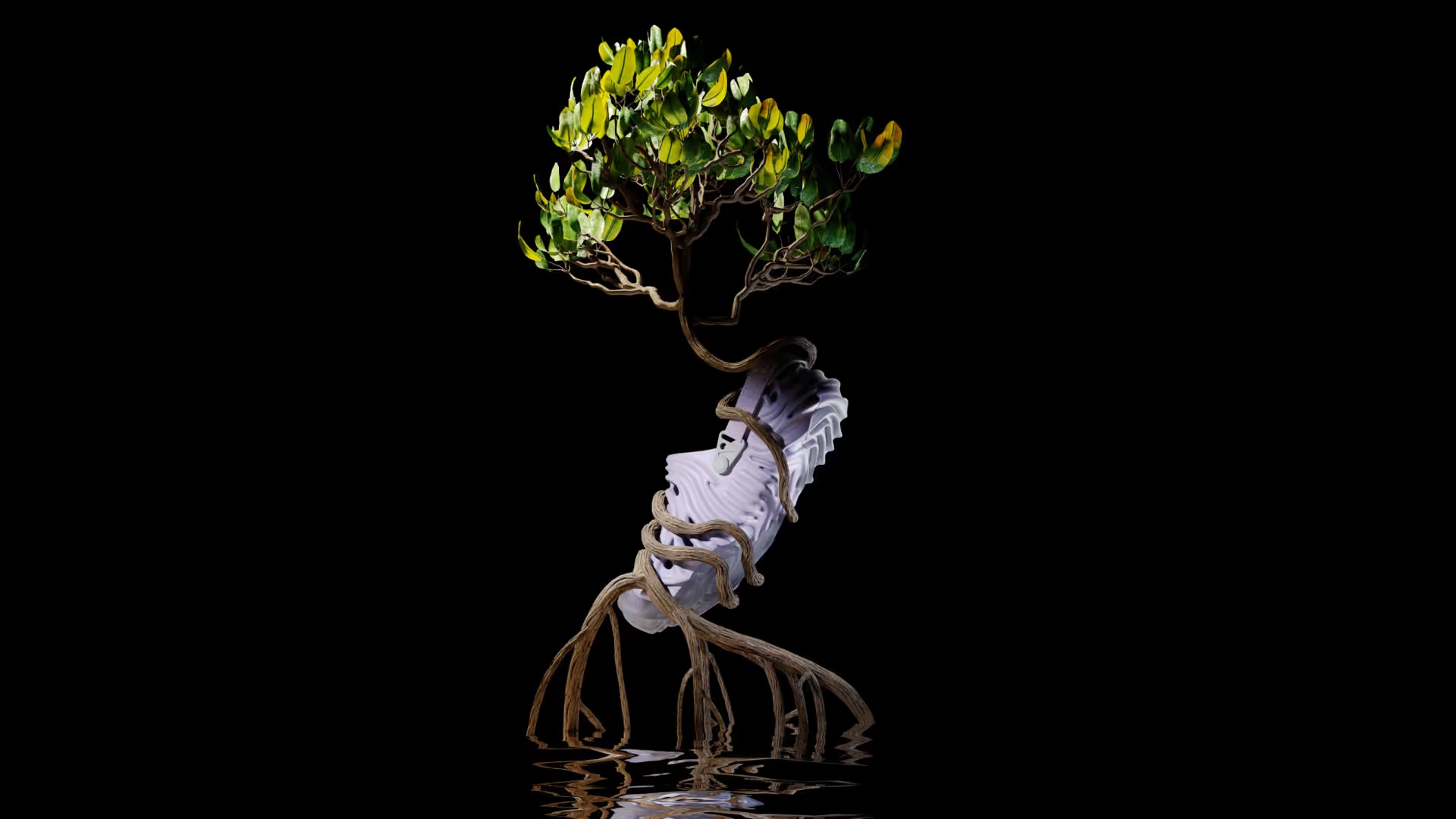
The Zünc Studio team also worked on a campaign for Crocs. Photo: Zünc Studio
Your projects lie in both experimental and virtual level, but still with great focus on materiality. What role do you attribute to materials, and especially the newest or ecologically ones, in contemporary society?
We love learning about all the new materials making their way into our daily lives. I went to a graduate’s show recently at UAL: Central Saint Martin’s here in London and was absolutely blown away by the student projects exploring these emerging design fields. It’s very inspiring and fills me with hope seeing younger generations searching for better design solutions, taking the lead, and paving the way forward. As research and investment in the field develops and these solutions become commercially cost-efficient, it's exciting to see materials like mycelium used as packaging and even in footwear. It will be inspiring to see more larger brands making the switch and taking on more responsibility.
In 2022, you were part of the exhibition Invisible Forces hosted by Kunsthalle Praha. Zünc Studio exhibited a several immersive projections including an interactive one. Each of them has its own topic related with nature, photosynthesis, biosystems etc. Could you describe them more thoroughly?
Photosystem II, the namesake piece of the series, is a room-sized immersive projection that wraps around three walls to hold the viewer in its leafy embrace. The animated film progresses in complexity and scale - from a waving sea of singular sprouts to massive manmade structures spilling over with an abundance of greenery. The evolution of this cycle shows how the human chapter on earth is a mere blip in the 3.4 billion years that organisms have been photosynthesising for. Part Of The Equation was a collaboration between Zünc Studio and Lukas Drevjany. This interactive piece is made up of tendrils that spurt and release oxygen bubbles as the spectator moves in front of the screen through motion sensors, allowing them to participate in the process of photosynthesis. The experience of this piece draws attention to the symbiotic relationship between plants and animals in a way that’s both playful and humbling.
In Plastic Diet, we look into an ocean tank filled with tendrilled creatures darting through glittering clouds of debris, which attach to the sweepers on contact. The work is inspired by newly discovered plastic-eating bacteria and imagines a future where these organisms have evolved to become self-propelling beings with an appetite for microplastics.
As if part of the architecture of the room itself, Living, Breathing Wall pulsates slowly with micro-herb growth. Silhouetted figures moving behind the structure appear to be in the gallery space itself, walking where the viewer may have been wandering themselves just moments ago. The geometry of the membrane-like wall is generated using voxel-building algorithms based on the infinitely connected gyroid structures found in nature - an example of biomimicry in CG design. In The Roots Are The Battery, particles of light run along the roots of a tree. The light animation highlights the storage of energies created through photosynthesis, as well as the transfer of nutrients that travel from the earth to the rest of the plant. It rotates slowly and constantly, allowing us to marvel at this otherwise unseen part of the plant.

Founder of Zünc Studio Ondřej Zunka. Photo: Archive of Ondřej Zunka
The part of the installation called Bio-Encryption was informed by a recent biology research focused on ability of the bacteria E.coli to storage significant amount of data. Are you a fan of this kind of high technologies? How do you think of their usage in everyday life?
The methodology of storing data in DNA of bacteria is still in its early days and certainly cannot compete with current data storage systems, but the idea is so fascinating. In a world where data is so valuable, the implications of such research are so vast we can hardly conceive of all the possibilities. Our current solutions – hardware-based data centres and computers in general use vast amounts of energy to run, so the idea of organic computation, however distant, could be game-changing. This technology has numerous issues, such as a significant data loss, which can occur when the bacteria mutate during replication. But it’s also a nice reminder that there is still so much of the world that we don’t understand. This won’t be the last discovery of this kind, and I can’t wait to see what else we can discover from the world around us.
What aim should design have in the realm of climate change and forthcoming environmental and social crisis?
We love working with brands who are creating sustainable products that help to alleviate waste problems. It’s a nice feeling to think the visuals we create for them will contribute to their success. Good design and storytelling can increase awareness, understanding and desirability for more sustainable alternatives. This extends beyond design, people in all professionals will eventually need to prioritise the principles of sustainability, longevity, and cradle-to-cradle design in their work. Whether that’s using environmentally friendly materials and processes, creating durable, long-lasting products, and considering a product's entire lifecycle to ensure its components can be fully recycled or composted. Being able to repair our things is also important. Rather than throwing away something that is broken, objects should be designed to be repairable rather than instantly replaced.
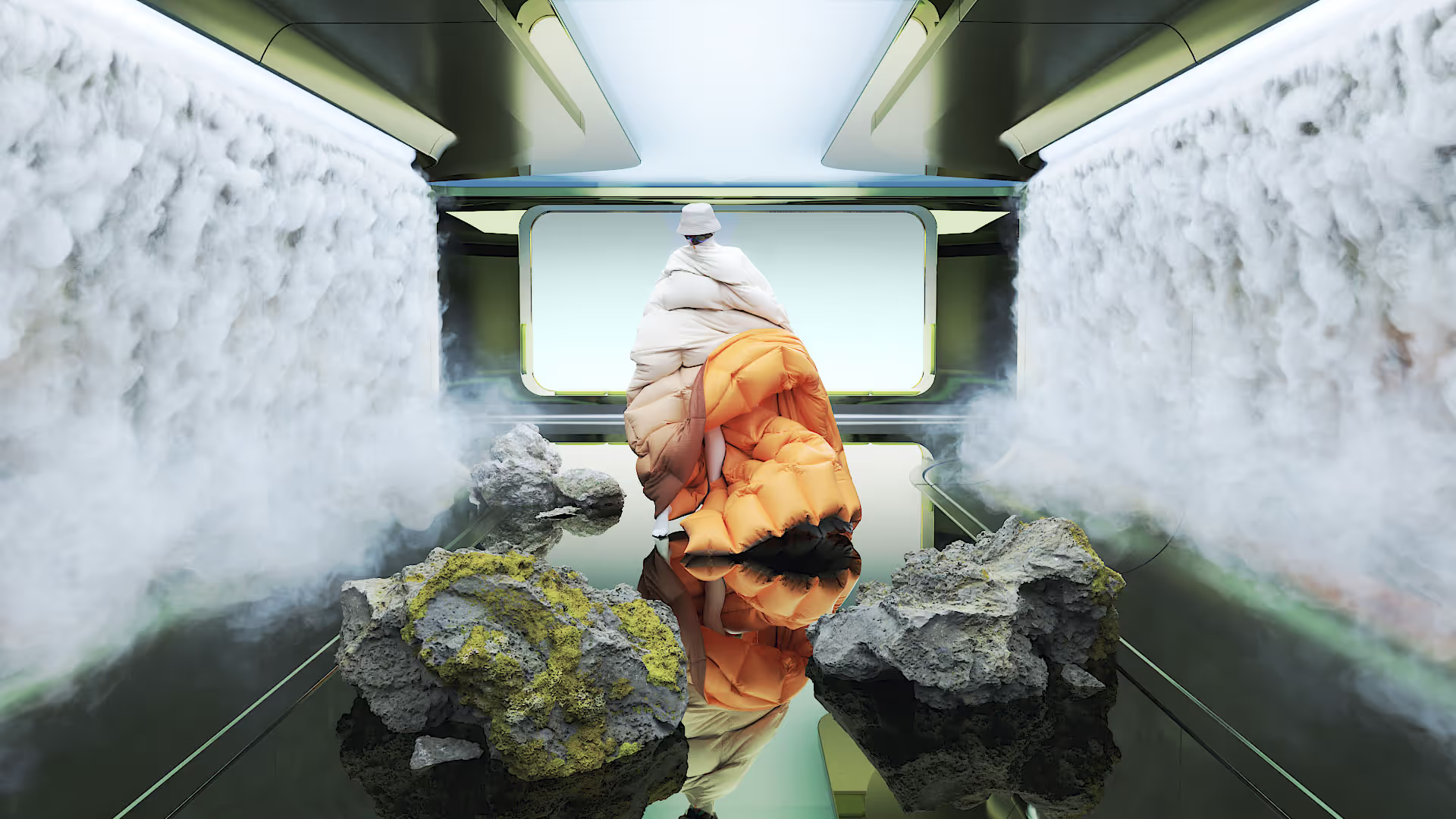
The Future Laboratory Project. Photo: Zünc Studio
What is the most recent project you’ve been working on?
We recently completed a large commercial campaign for a medical skincare brand. The cosmetic and skincare industry are embracing CGI more and more, perhaps due to all the ways you can visualise ingredients and product benefits in abstract ways or on a microscopic level.
Is there a “dream project” you wish to create? If yes, what kind of project would it be?
We are constantly impressed by what other designers and studios in the space are creating: the other day I saw a beautifully crafted motion design film for a more efficient air conditioner company, and I was like wow I wish we did that. We’re just a small part of the entire ecosystem and no single project could be that important, it’s about being there to help to those who are building solutions for a more sustainable and resilient future. A dream project therefore is to become a go-to creative studio/agency for future facing brands and innovative products that need their stories to be told.
